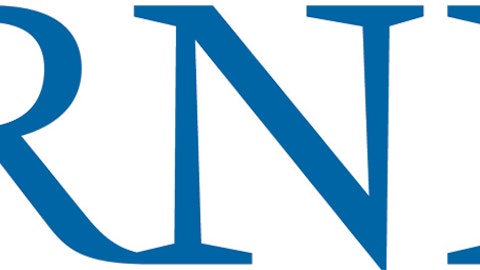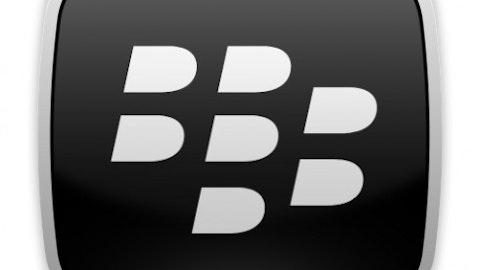When most people decide to buy a particular stock they simply enter a limit order at their desired price. Since the order won’t be executed until the stock price drops to the desired price the limit order may simply languish for days, weeks, or even months. This is time wasted. An alternative to limit orders which allows you to collect a premium in exchange for this time is the put option, specifically the act of selling a put option. I’ll look at three companies which I’ve written about recently and show how selling put options can generate significant profits while you wait for the price to drop.

I’ve written about Microsoft Corporation (NASDAQ:MSFT) a few times, but in this article I determined that the stock is outrageously undervalued. Even under a zero growth scenario I put the fair value between $30 – $36 per share, with the more realistic fair value range being roughly $43 – $56 per share. With the stock currently trading around $28 per share Microsoft is one of the biggest bargains out there.
Of course, you could just buy the stock at the current market price. Another option is to sell an at-the-money put option. The premium collected from this has the effect of lowering the purchase price below the current market value while giving you a good chance of having the shares put to you.
The March 2013 $28 put option as of this writing can be sold for $0.77/contract/share, or $77 per contract. This strike is just slightly above the current share price, which means that if the stock is flat until expiration you will be obligated to buy the shares at $28 each. The premium, however, would lower your purchase price to $27.23 per share. As long as the stock price stays above $27.23 but below $28 you’d be buying the shares at a discount.
If the stock price rises above the $28 strike price then your option would be out-of-the-money, meaning that it would expire worthless. If this occurs then you would not buy any shares and the premium collected would represent a 2.75% return in about 30 days, or around 31% annualized.
You could also use these put options in an attempt to simply generate income. For this strategy you’d want to sell an option with a strike price below the current stock price, giving you a buffer against the option being exercised. An example of this would be the March 2013 $27 put option. This strike price is about 3% below the current stock price and can be sold for $0.31/contract/share or $31 per contract. If the stock price stays above $27 you’d achieve a return of 1.15% in about 30 days, or roughly 13% annualized. The breakeven point for the stock is $26.69, meaning that you would only suffer a loss if the stock fell below this value, about 4% below the current stock price.
General Motors Company (NYSE:GM)
General Motors Company (NYSE:GM), bailed out by the US and Canadian governments during the financial crisis, recently announced that it would be buying back 200 million shares from the US treasury for $27.50 each. In this article I determined that GM was getting a good deal with these buybacks since my fair value range for the company was about $30 – $43 per share.
With the stock currently trading for around $28.50 per share, the March 2013 $29 put option looks appealing. This option can be sold for about $1.22/contract/share or $122 per contract. If the stock is flat until expiration your effective purchase price would be $27.78 per share. If the stock were to rise above $29 per share then the option would expire worthless and you’d achieve a 4.2% return in about 30 days, or roughly 48% annualized.
Because GM is set to announce earnings on Feb. 14 option premiums are higher than normal due to increased implied volatility. This is typically a great time to sell options because of these high premiums. If we look at a lower strike price, $27 for instance, the premium for the March 2013 expiration is $0.42/contract/share. This strike price is more than 5% below the current stock price but still gives you an annualized return of about 17% if the stock stays above $27 per share. Increased implied volatility is a friend of the option seller.
The Men’s Wearhouse, Inc. (NYSE:MW)
Men’s Wearhouse stock has declined by roughly 8% to around $29.50 per share since I wrote about it here, putting it well below my fair value range of $33 – $44 per share. Earnings are set to be announced on March 6, putting the March 2013 expiration soon after the announcement. This will elevate premiums and allow for exceptional returns.
The March 2013 $30 put option can be sold for $1.85/contract/share or $185 per contract. This is slightly above the current stock price and would give you an effective purchase price of $28.15 if the stock stayed below the strike price until expiration. This price is about 15% below the low-end of my fair value range. If the stock price rises above the strike price the option will expire worthless and you will achieve a 6.17% return in about 30 days or 70% annualized.
Looking at the March 2013 $27 option the premium is $0.60/contract/share, giving you about an 8.5% buffer against a stock price decline. If the stock remains above the strike price you would realize a 2.22% return in about 30 days or 25% annualized.
Of all three stocks I would expect Men’s Wearhouse to be most volatile around earnings. However, since this strategy is grounded in having a reasonable fair value estimate being put the shares at $27 each is not a bad thing.
The Bottom Line
Selling put options in order to buy undervalued stocks allows you to not only set the purchase price but also be paid to wait for the market price to reach that purchase price. And in the case where the option expires worthless you can achieve an exceptional return, especially when an earnings announcement is set to occur before expiration.
The article Get Paid to Buy These Stocks at a Discount originally appeared on Fool.com and is written by Timothy Green.
Copyright © 1995 – 2013 The Motley Fool, LLC. All rights reserved. The Motley Fool has a disclosure policy.





